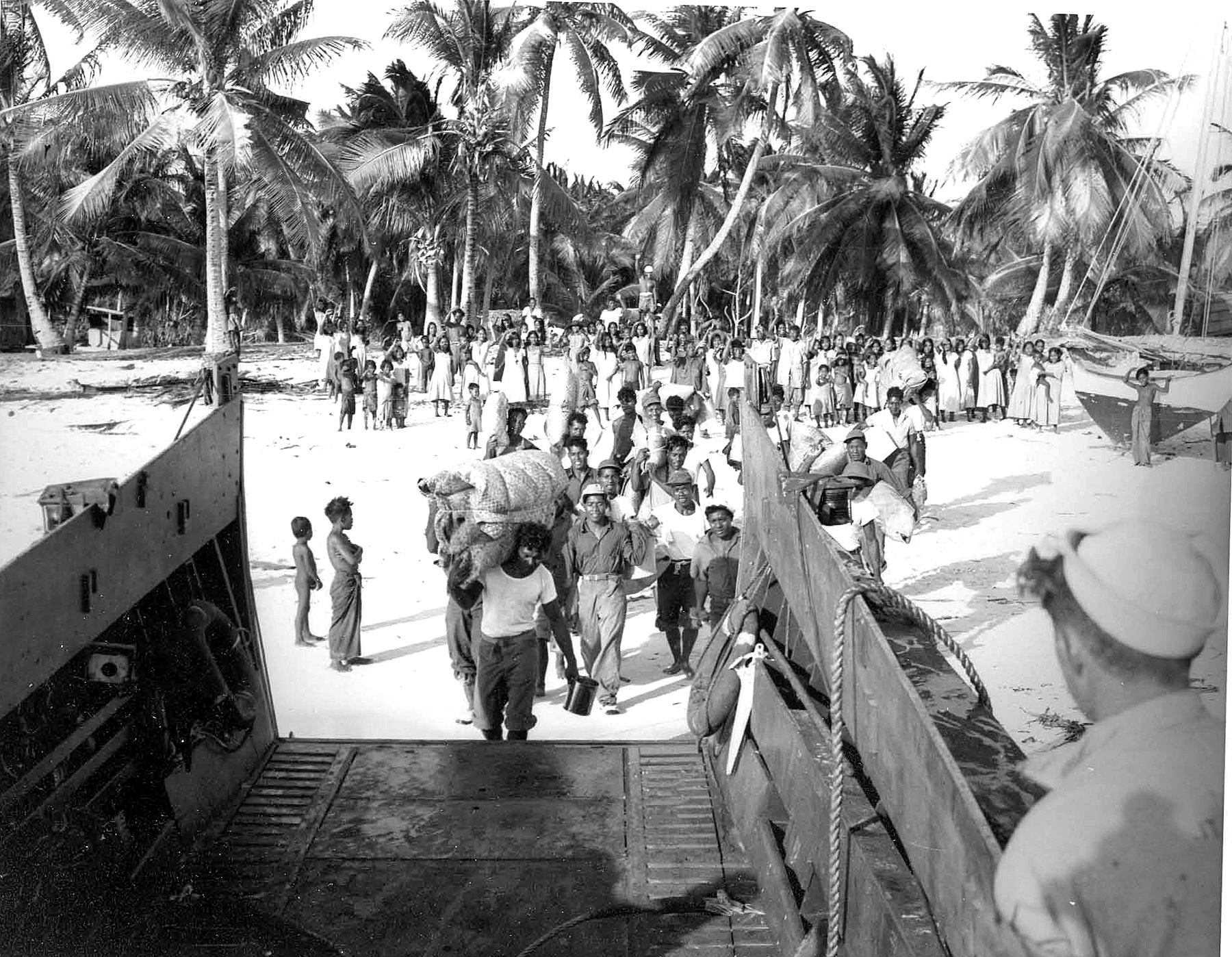"For the good of mankind and to end all world wars..."
(reasons given by American military to do nuclear testing)

French engineer Louis Reard, designer of bikini, courtesy pinimg.com.
The Bikini Islands are a "necklace" of 23 islands in the Pacific where a series of atom and hydrogen bombs were set off during the 1940's and 1950's. At first considered a success, by the 1970's, the American government would discover that they had another Love Canal on their hands.
One hundred and sixty-seven natives used to fish and grow small crops on the islands when the American military approached them with a request to do nuclear testing. Given that the islands were far away from air and sea routes, the Americans thought they were a good choice. King Juda, the ruler at the time, agreed to the testing. In 1946 the natives were moved eastward to Rongerik Atoll.

Evacuation of Bikini Island courtesy upload.wikimedia.org.
The military wanted to see how a fleet would stand up to an atom or hydrogen bomb. Dubbed "Operation Crossroads", they brought in 242 ships, 156 aircraft, 25,000 radiation recording devices, 5,400 experimental rats, goats and pigs and 42,000 U.S. military and civilian personnel. One by one, they detonated a total of 23 atom and hydrogen bombs, like a little boy playing with fireworks in his swimming pool filled with toy boats.

Potential ships anchored at Pearl Harbor for Operation Crossroads courtesy upload.wikimedia.org.
The cost, however, was much deadlier. The Bikinians did not fare well on Rongerik Atoll where the trees nor the crops were fruitful. In 1948, the American government transported them to Kwagalein Atoll where they camped out in tents beside the American airstrip. However, they still struggled to survive. Six months later, the natives were moved to Kili Atoll where the fishing was meager.
Finally, on March 1, 1954, the American military detonated the bomb of all bombs, a 15-megaton hydrogen bomb nicknamed "Bravo" (compared to Hiroshima's "Little Boy" which was 15 kilotons). Millions tons of coral, sand, plant and sea life blasted miles into the air. A three mile-wide fireball erupted into the sky. Snow-like ash fell on the neighbouring Rongelap Island. A gaping, blue sea-filled crater measuring a mile wide and 200 feet appeared on the island.

"Bravo" crator courtesy www.artificialowl.net.
Residents of the neighbouring islands were later evacuated, experiencing radiation like symptoms of nausea, diarrhea, hair loss and skin burns. A Japanese tuna boat, 90 miles east of the Bikini Islands, experienced similar symptoms. Many were hospitalized and one slipped into a coma and died. While the American government wouldn't accept responsibility for his death, they did send the widow a cheque for 2.5 million yen.
Bikini Lagoon became a veritable playground for Jacques Cousteau types with a ghost fleet of the world's most historic war vessels resting at its bottom, including the U.S.S. Saratoga and the Nagato. The latter was the ship on which the Japanese sailors screamed "Tora! Tora! Tora!" before their attack on Pearl Harbor in 1941.
The natives returned to Bikini Island in 1978 with the hope of continuing life as they once knew it. However, wildlife was not healthy. And soon the natives were not healthy. Eight years later, the natives abandonned the Bikini Islands once again as American testing proved that cesium 137 had contaminated both the soil and the food chain. Once dubbed "the sexiest place on the planet", it was now a ghost island, all "for the good of mankind".

For more information, read:
1. The Making of the Atomic Bomb, Richard Rhodes, 1986 (Pulitzer Prize winner).
2. For the Good of Mankind: A History of the People of Bikini and Their Islands, Jack Niedenthal, 2013.
3. Ghost Fleet: The Sunken Ships of Bikini Atoll, James P. Delgado, 1996.
No comments:
Post a Comment